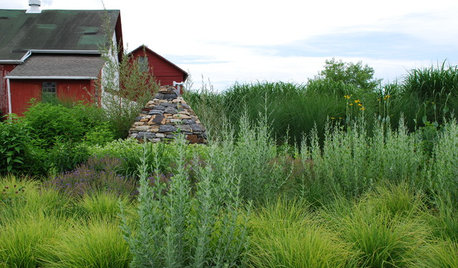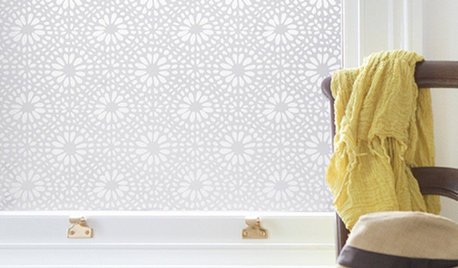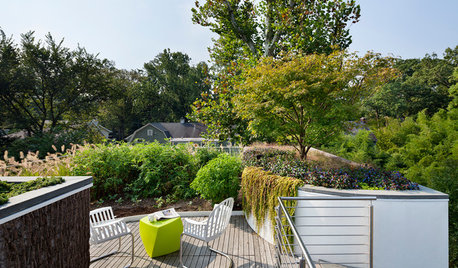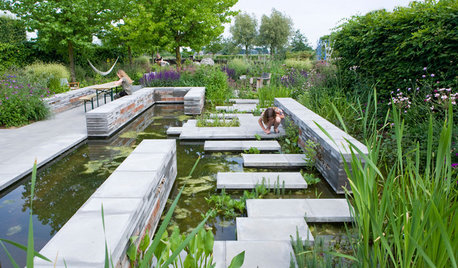Problem with Gritty Mix
cj_speciosa
11 years ago
Related Stories

LANDSCAPE DESIGNProblem Solving With the Pros: How to Build a Garden in an Urban Canyon
Skyscrapers, noise and deep shade create an unlikely sweet spot for a timeless green retreat in New York City
Full Story
KITCHEN DESIGNNew This Week: 2 Kitchens That Show How to Mix Materials
See how these kitchens combine textures, colors and materials into a harmonious whole
Full Story
LANDSCAPE DESIGNProblem Solving With the Pros: An Abundant Garden Stretches Its Means
Swaths of resilient, eye-catching plants thrive with little care or resources in the landscape of a Pennsylvania farmhouse
Full Story
ECLECTIC HOMESHouzz Tour: Problem Solving on a Sloped Lot in Austin
A tricky lot and a big oak tree make building a family’s new home a Texas-size adventure
Full Story
GARDENING GUIDESSolve 3 Common Landscape Problems — With More Plants
Sometimes the best defense is a good offense
Full Story
DECORATING GUIDES5 Pet Problems Solved by Design
Design-Friendly Ideas for Pet Beds, Bowls, Doors — and yes, the Litter Box
Full Story
DECORATING GUIDESSolve Privacy Problems With Window Film
Let the light in and keep prying eyes out with an inexpensive and decorative window film you can apply yourself
Full Story
LANDSCAPE DESIGNProblem Solving With the Pros: Sustainable Landscape Captures Runoff
An underground cistern, permeable paving and a rain garden are part of this Washington, D.C. yard's thoughtful design
Full Story
CHRISTMAS10 Quick Solutions for Last-Minute Holiday Problems
Sail right by potential decorating, hosting and gift-giving pitfalls with these invaluable nick-of-time tricks
Full Story
LANDSCAPE DESIGNProblem Solving With the Pros: A Garden Built From Scratch
Nature is reintroduced and redefined in a Dutch urban setting, to forge a dynamic relationship with city dwellers
Full Story








Tiffany, purpleinopp Z8b Opp, AL
cj_speciosaOriginal Author
Related Professionals
Carson Landscape Architects & Landscape Designers · Signal Hill Landscape Architects & Landscape Designers · Essex Landscape Contractors · Harrisburg Landscape Contractors · Little Ferry Landscape Contractors · Mount Kisco Landscape Contractors · North Richland Hills Landscape Contractors · Riverview Landscape Contractors · Tuscaloosa Landscape Contractors · 07920 Landscape Contractors · Greenfield Landscape Contractors · Aspen Hill Interior Designers & Decorators · Charleston Interior Designers & Decorators · Nashville Interior Designers & Decorators · Whitman Interior Designers & DecoratorsTiffany, purpleinopp Z8b Opp, AL
cj_speciosaOriginal Author
cj_speciosaOriginal Author
Tiffany, purpleinopp Z8b Opp, AL
bedtime
petrushka (7b)
cj_speciosaOriginal Author
cj_speciosaOriginal Author
kaktuskris
petrushka (7b)
tapla (mid-Michigan, USDA z5b-6a)
cj_speciosaOriginal Author
Tiffany, purpleinopp Z8b Opp, AL
cj_speciosaOriginal Author
tapla (mid-Michigan, USDA z5b-6a)
cj_speciosaOriginal Author
meyermike_1micha
Loveplants2 8b Virginia Beach, Virginia
tapla (mid-Michigan, USDA z5b-6a)
asleep_in_the_garden
meyermike_1micha
tapla (mid-Michigan, USDA z5b-6a)
asleep_in_the_garden
cj_speciosaOriginal Author
meyermike_1micha
Loveplants2 8b Virginia Beach, Virginia
Sugi_C (Las Vegas, NV)
tapla (mid-Michigan, USDA z5b-6a)
kaktuskris